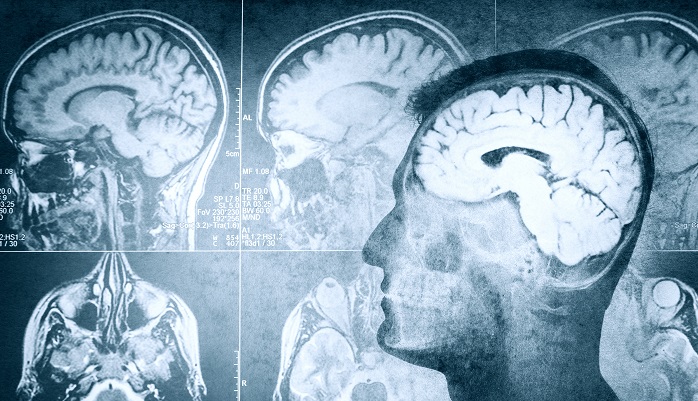The secret to true happiness lies in knowing who you really are.
The yoga view of the self is about you—your essential nature. But what is your essence? What are you made of? Are you made of matter—a mere collection of material atoms and molecules? Or is your essence something else?
“Who am I?” Maybe you’ve never even asked yourself this question. You might think you already know who you are. Unfortunately, however, it’s likely that you don’t know who you are at all. And if you don’t know your real identity, you’re in trouble. You’ll spend your life in a kind of dream state—you’ll falsely identify yourself as someone or something you aren’t.
Then, on the basis of this false identification, you’ll determine the goals of your life and the purpose of your existence. You use these goals to gauge whether you are making “progress” in life, whether you are a “success.”
Yoga is the Science of Understanding One’s True Identity
The subject of identity is extremely personal as it relates directly to knowing your true purpose in life—your reason for existing. The question “Who am I?” is not a philosophical football meant to be kicked around coffeehouses by pseudo-intellectuals. It’s a real life question. Nothing is more important and more relevant than to know who you are.

Are You Your Body?
You are your body, right? You are chemical in essence … right? At least, that’s what one of America’s most influential scientists claims:
“I am a collection of water, calcium and organic molecules called Carl Sagan. You are a collection of almost identical molecules with a different collective label.” (Carl Sagan, Cosmos [New York: Random House, 1980], p. 127.)
Like Sagan, most people believe that they are their physical body. So if you ask them who they are, they think and respond in terms of bodily labels.
“I’m Susan. I’m blond, 29 years old, a mother, and still 36-24-36!”
“I’m Henry. I’m a white American male and proud of it!”
“I’m John. I’m a lawyer. I’m 40 years old and getting older every day.”
“I’m Alice. I’m a female student. I’m fat and I’m a Methodist.”
Name, race, age, sex, religion, nationality, occupation, height, weight, and so on—all these are bodily labels. Therefore, if you consider your body to be yourself, you automatically identify yourself with such labels. If your body is fat and ugly, you think, “Woe is me! I am fat and ugly.” If your body is 60 years old and female, you think, “I am a 60-year-old female.” If your body is black and beautiful, you think, “I am black and beautiful.”
But is the physical body really the self? Are you really your body?
The Body Is Yours—But It Is Not You
The body is yours—but it is not you. The body is a garment you are wearing, a machine you are using, a vehicle you are driving.
The body is your possession.
Just as a person does not identify himself as being the shirt he is wearing, he also should not identify himself with the body that he is wearing.
A retired professional football player in the United States once discussed the particular event that made him decide to quit playing. He had been running with the football toward the goal, with two tacklers chasing him. As his legs started giving out, he thought, “Come on, you old legs—don’t give out on me now!” This is like a race car driver who talks to his car: “Keep on going, Betsy—don’t let me down now!” In other words, you use your body as a type of vehicle; but like all vehicles, your body is certain to break down sooner or later.
And just as any other garment, tool, machine, or vehicle is subject to wear and tear, sometimes malfunctioning and sometimes breaking down completely, so your body undergoes such changes during its existence. Yet despite the loss, dysfunction, or transformation of different body parts, you, the self, remain a constant factor throughout. You, the self, use the body.
The body is not you—rather, it is yours.

Scientific Evidence That You Are Not the Body
Let me ask you a few simple questions:
Do you exist at this moment?
Did you exist five years ago?
Are you your body?
Most people would answer “yes” to all three questions. But if you identify your body as yourself, and simultaneously accept that you exist now and also existed five years ago, then you have a problem: The body you had five years ago does not exist today. There is a dynamic turnover of atoms and molecules that make up your body. There isn’t a single particle of matter—not one atom—present in your body today that was present five years ago.
The body you have today is not the same body you had five years ago. It’s not that the body you had still exists but has now changed somewhat. No. The body you had is completely gone. That collection of atoms appearing as flesh, bone, blood, hair, and so on no longer exists. Yet you still exist.
Studies at the Oak Ridge Atomic Research Center revealed that about 98 percent of all the atoms in a human body are replaced every year. You get a new suit of skin every month and a new liver every six weeks. The lining of your stomach lasts only five days before it’s replaced. Even your bones are not the solid, stable structures you might have thought them to be: They are undergoing constant change. The bones you have today are different from the bones you had a year ago.
Experts in this area of research have concluded that there is a complete, 100 percent turnover of atoms in the body at least every five years. In other words, not one single atom present in your body today was there five years ago.
If you were the molecules and atoms of which your body used to be composed, you would now be a personality divided into the many new bodies that those atoms and molecules have become part of.
And, of course, the molecules and atoms that make up your present body are not “new.” They too are used. Your body is made of recycled material. The matter you now call “yourself” was once part of many different collections of atoms and molecules that went by different names.
This way of looking at the situation reveals the absurdity of Sagan’s conclusion. If the body is the self—if you are a collection of molecules and atoms—then when those particles disperse, that’s the end of that particular “collection.” That collection of atoms and molecules that went by a particular, distinct, collective label (your name) no longer exists.
If you are the body, then when the body is gone you should also be gone. But this isn’t the case.
So when you look at a picture of “yourself” taken only seven years ago, you are looking at a body that no longer exists. Every single molecule that was present in the body shown in the photography is now gone. Yet you still exist. You are not gone. Now, since the body you had seven years ago no longer exists, yet you still exist, you must logically conclude that (1) you were not the body you had on seven years ago, and (2) you are not the body you have on today.
The material body has sometimes been compared to clothing worn by the self. At one point you had a baby body; then you took off the baby body and put on a child body; later on, you wore an adolescent body; and after that, you put on a young adult body. In all cases it was you, the same self, who was wearing those different bodies.
You—the self—are the constant factor in the sea of physical/bodily material changes.
You know that you existed seven years ago; you were there. You also know you exist right now. The same you, or self, who existed then also exists now. And this same self will exist when the present body is gone.
Techniques to Help You Realize that You are Not the Body
A contemplative tour through your family photo album
If you take a contemplative tour through your family album, you can appreciate the contrast between the body’s ever-changing nature and your unchanging nature.
Take a look at photos of “yourself” (your body) when it was one year old or five years old. Then ask yourself: “Where is that body now?” Look at your child body and adolescent body among the photos, and ask yourself, “Where is that body now?” Where are all those bodies that were photographed so many years ago?
Now consider the following: There is not an atom in your body today that was present when those photos were taken. The eyes you see in the photograph are a different set of eyes than those you are seeing with: They are made of completely different material particles. The bodies in those photographs have long since disintegrated and merged into the earth, water, fire, and air, and have gone to make up other bodies—the bodies of various insects, plants, birds, animals, humans and so on.
Yet you are still you. You exist today. You also existed yesterday, last month, five years ago, ten years ago, 15 years ago, and so on. But that body you had one year ago, five years ago, 15 years ago, etc. does not exist today. You, the self, existed throughout all these changes of your body.
Become aware of your body and its activities
Yogis have a meditation technique that helps them to realize that they are not the body. They say to themselves, “I am aware that I am doing such-and-such.” By doing this they experience a type of detachment from their body and its activities.
While a yogi is eating, for example, he’ll say to himself, “I am aware that I am eating … I am aware that I am tasting something sweet.” He doesn’t dive into the taste—rather, he is a little apart from it.
Through this technique, he gradually becomes detached from all the body’s activities, sensations, feelings, and so on. He is aware that things are happening, but he’s untouched by them. He’s free from the movement of the waves of sensations, thoughts, and so on that pass over him. He’s the calm center of the storm that rages all around him.
Such a yogi and a hedonist are exact opposites in consciousness. The yogi stands apart from the body and the hedonist dives into it—trying to savor every pleasant sensual tingle. And by diving into the sensual gratification, he is diving into the material senses—that is, he is becoming more deeply immersed in false bodily identification.

Are You the Brain?
Many people believe that a person is the brain or some part of the brain. You may be one of them. Paul Weiss writes this about the rapid change of the molecular particles that make up the brain cells.
“Recent studies on the turnover of the molecular population within a given nerve [brain] cell have indicated that … their macro molecular contingent is renewed about ten thousand times in a lifetime.” [In other words, the matter making up each brain cell is completely renewed every three days.]
~Paul Weiss, “The Living System: Determinism Stratified,” in Arthur Koestler and J.R. Smythies, eds., Beyond Reductionism (London: Hutchinson, 1969), p. 13.
This means that your brain—that mass of matter which is contained in your skull today—is not the same brain that was in your skull last week.
The brain is used by the self; the brain is not the self. Of course, the brain is a very special part of the body—you, the self, use it to direct and control the rest of the body machine. It also serves to carry and process information coming from the different parts of the body and the external environment to you. But you are not your brain. You are the user of your brain.
Are You Your Mind?
While you may correctly understand that you are not the physical body, you may incorrectly conclude that you are the mind. The mind, however, is not the self any more than the body is. You are not your mind.
You, the self, are the viewer of the mind. You can watch the mind much like a person in a movie theater watches a movie. You, the self, are a little apart from the mind. You can really be quite aloof from the activities of the mind.
The silent witness technique is a meditation technique used by some yogis to achieve a state of calmness and tranquility. The yogi sits in a quiet place and lets his mind simply roam wherever it may. He watches his mind as a completely disinterested viewer and tells himself, “I am the silent witness. I make no effort to think, but thoughts come automatically. I am watching thoughts flow through my mind, but I am apart from them. I am the silent witness of my mind’s activities.” Such a meditation practice can help you perfectly realize that you are not your mind.
The attempt to control the mind also illustrates that the mind is not the self. Sometimes you want your mind to concentrate on a particular topic—like what you are reading right now, for example. But the mind may keep wandering off, causing you to try to drag it back. Or sometimes your mind is filled with thoughts and feelings that you don’t want but just can’t get rid of, no matter how hard you try. So you are the person who is trying to control the mind; you are not the mind itself.
“We get ample proof of not being our thoughts when we try to control and to direct them … If the mind is rebellious and undisciplined it means that the “I” is not the mind.”
~Robert Assagioli, Psychosynthesis: A Manual of Principles and Techniques
(New York: Hobbs, Dorman & Company, 1965), p. 117
If the mind is undisciplined, who is trying to discipline it? If the mind is to be controlled, who is to control it? Who is trying to control the mind? It is the self (the atma).
Your mind is your possession, just as your gross physical body is your possession. Your mind is yours—it is not you.
The mind is a subtle material body. As with the gross physical body, the mind is like clothing that covers the self. The difference is that the gross physical body is like the outer garments and the mind is like the undergarments. So you, the atma, are neither the physical body nor the mind; you are actually encased in both the gross and subtle material bodies.
Techniques to Help You Realize You are Not the Mind
Look at a flower
Look at a flower and say to yourself, “I see the flower.” You are the seer, the perceiver of the flower; the flower is the seen or perceived object. Thus, the two basic factors of perception are the seer (the self) and the seen—the observer and the observed. Now, while you gaze at the flower, ask yourself: “I am seeing this flower. But where am I, the seer, located? And of what material elements am I made?”
Watching your dreams
Tonight, as you are lying in bed almost ready to fall asleep, watch your body fall asleep. Mentally say to yourself, “I am aware that my body is falling asleep.” As you fall deeper and deeper into sleep, there is a good chance that you will begin dreaming. In this state you will be half-awake, half-asleep. Watch these dreams. Mentally say to yourself as the dream begins, “I am aware that I am dreaming.”
By persisting in this practice, you will eventually be aware that you are dreaming, even in deep sleep. But this ability is only a side benefit; the real point is to experience yourself as the viewer of the stream of mindstuff.
Silent witness meditation
Relax, and sit or lie in a quiet place. Don’t attempt to control the thinking process by trying to think certain thoughts and not think others. Instead, let your mind think about whatever it may.
Now watch your mind and become aware of how you are actually aloof from the thinking process. Say to yourself, “I am the silent witness. I make no effort to think, but thoughts come automatically. I am watching thoughts flow through my mind, but I am aloof from them. I am the silent witness to my mind’s activities.”
In this way, you’ll be able to experience that you are separate from the mind.
You can also watch the passing emotions, feelings, desires, fears, and so on as they rise to the surface of the mind and then pass away. The stream of mindstuff thus flows along, and you are the viewer of it. Just as a person sits by an ever-moving stream, so you, the self, sit by the stream of mindstuff. Just as a stream may be very clear or very polluted, so the stream of mindstuff may be very clear or very polluted. In either case, you are the witness of that stream—not the stream itself.
You may not be content to watch the stream of mindstuff flow freely, but instead may try to control it, redirect it, or stop it completely. But the very fact that you can try to redirect or control your mind, combined with the fact that it is so difficult to succeed in the endeavor, further shows that you, the self, are not the mind or stream of mindstuff.
Controlling the mind
Gaze intently at some nearby image in your immediate environment. Now close your eyes and look at the picture of that image in your mind. Try to hold the image in your mind and look at it for quite some time. If it begins to move around, try to steady it; if it begins to fade away, bring it back. This exercise should make it quite clear how hard it is to control the mind—to keep something in your mind that you want to keep in your mind.
If you can think thoughts you do not want to think, this further illustrates that you are different from your mind. Sometimes after a painful love affair, a man will tell his friends, “I just can’t stop thinking about her. I just can’t get her out of my mind.”
Similarly, your mind may sometimes be filled with desires so disgusting that you would be embarrassed to have anyone suspect you were thinking them. When such thoughts and emotions go through your mind, you do not like it. You may feel, “Why is my mind filled with such thoughts? I don’t want to think like this.” However, trying to push such thoughts out of the mind usually doesn’t work.
If the mind is to be controlled, who is to control it? Who is trying to control the mind? It is the self. You, the self, try to control your mind. The mind is your possession. It is not you.

You Are a Spark of the Element Life
If you are not the gross physical body and you are not the mind, then who are you? What is your essence?
According to yoga, you are made of an energy completely distinct from matter. You, the self (atma), are an indivisible unit of the element known as life.
Thus, there are two fundamental energies—matter and life. Your body is made of the element matter, but you, the atma, are a spark of the element life. When you, the life particle, are in or wedded to a material body, that body is called a living organism. So the answer to the question “Who/what are you?” is: You, the self (atma), are a particle of the element life. You are presently within a material body. You are temporarily possessing and using that body.
According to the science of yoga, you, the life particle, are seated in the heart (but not inseparably—you can remove the physical heart, but you will not be removed with it). Your influence spreads throughout the body by means of this vast network of channels (nadis) that carry the life force to every cell of the body.
It is important to know that you are not material in essence but rather an eternal spark of life. But such knowledge is just the beginning of a long and arduous journey toward a perfect understanding of your identity.
Your Body Will Die … But You Will Always Exist
For the self there is never birth nor death. Nor does the self ever cease to exist. The self is unborn, eternal, ever-existing, undying, and primeval.
~Bhagavad-gita 2.20
If you erroneously identify yourself with your body, you will conclude that your existence will end with the destruction of your body. But if you know that you are the eternal self within the body, you know that your existence will not end when your body dies.
Your body has a beginning and an end; your body is subject to birth and death; but you, the spark of life within the body, are eternal. You have no beginning, nor will you have an end. The material body will cease existing, but you will never cease existing.
The Body Has No Value Without the Presence of the Atma
Life attracts life. We may think we are attracted to the body of a beautiful woman, but actually it is the spark of life that attracts us. When Marilyn Monroe “died,” when the life force left the material body, the body was no longer attractive. So is it logical to think that material energy is all-attractive? No. Life force or spirit is the attractive element.
Without the presence of this atma, without life, you see a body for what it really is: a bag of chemicals.
It is the presence of the life particle—the person—that makes the physical body valuable. If this atma is not present in the body, then the body has no real value. As soon as the person, the atma, leaves the body, the body becomes worthless. The closer you are to this understanding, the closer you are to wisdom and sanity.
The material body is valuable only when the infinitely valuable person is present within the body.
Learn more, Mistaken Identity: You Are Not Your Body





 Kirtan
Kirtan Meditation
Meditation
Yoga therapy is the adaptation of yoga practices for people with health challenges. Yoga therapists prescribe specific regimens of postures, breathing exercises, and relaxation techniques to suit individual needs.